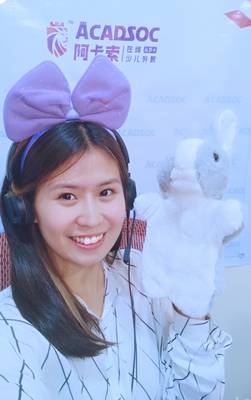- A+
请细心细心看
the students of class two are seriously reading the book written by lu xun.
按语句成分区别,此句为:
the students of class two are seriouslyreading the book written by lu xun.
(主语) ( 定语) (谓语) (状语) (谓语) (宾语) (定语)
按意群区别,此句为:the students of class two are seriously reading the book written by lu xun.
一、英语各种成分的根柢意义及用法
(一)、主语
主语是全句谈论的中心论题。咱们在说一句话的时分,首要
要清楚咱们讲的是“哪自个”?或许是一件“啥事”?或许是一件“啥物体”,等。这些代表“哪自个”、“啥事”、“啥物体”等的有些就是语句的主语。
主语是指语句的某个有些,它可所以一个词,也可所以一个词组,还有可所以一个从句,甚至一句话中会有几个并排的主语等等。所以,英语中许多词类(或词组、从句)都可以做主语。另外,英语中还有一种特别的主语方法叫“方法主语”,例如:it .... that ...句式等。
1. peter is a well-known pianist. (名词作主语)
2. two-thirds of the students are boys in our school. ( 数词词组作主语)
3. he likes reading storybooks. (代词作主语)
4. to swim in kunming lake is a great pleasure. (不定式短语作主语)
5. what 
we shall do next is not yet decided. (从句作主语)
6. it took us two hours to travel around the city by subway.
(it 是方法主语, to travel...有些是真实的主语)
请指出下列句中主语的中心词。
1. the teacher with two of her students is walking into the classroom.
2. there is a bird flying in the sky.3. the useful dictionary was given by my mother last year.4. it is very difficult to do today's homework without your help.
(二)、谓语
在清楚了主语后,咱们再来说谓语。谓语是用来答复、阐明、说明主语“做啥”、“是啥”、“怎么样”等的有些。英语句子中,除少量情况外,谓语有必要是动词。而且,除了倒装等特别情况外,谓语的方位相对来说是固定的,它老是位于主语的后边。
1. his parents are teachers. (系动词和表语一同作谓语)
2. we study hard. (行为动词作谓语)
3. we have finished reading the book. (助动词和行为动词一同作谓语)
4. he can speak english. (神态动词和行为动词一同作谓语)
请选出下列句中谓语的中心词。
1. i don't like the picture on the wall.
2. the days get longer and longer when summer comes.
3. do you usually go to school by bus?
4. did the twins have porridge for their breakfast?
5. what i want to tell you is this.
(三)、宾语
从语法视点说,及物动词后边要接宾语 (介词后也有宾语) 。从意义上来说,宾语是动作的目标、方针。
宾语是对谓语动词的进一步阐明宽和说。
1. we often help him. (代词作宾语)
2. he likes to play basketball. (不定式作宾语)
3. we enjoy listening to the music. (动名词短语作宾语)4. she said that she felt sick. (从句做宾语)
the sun gives us light and warmth. (us为直接宾语,light and warmth为直接宾语)
1、直接宾语多指人,直接宾语多指物。可以带两个宾语的动词有:bring, give, show, send, pass, tell 等。
直接宾语一般放在直接宾语的前面。
2、假定偏重直接宾语,可把直接宾语放在直接宾语的前面,但直接宾语前须加介词 “to”或“for”。
接to的动词有:give, bring, pass, lend, sell, send, show, tell, write等。
give your mother the letter. =give the letter to your mother.
直接宾语 直接宾语
接for的动词有:buy, find, cook, draw, get, sing等。
can you find me my bag? =can you find my bag for me?
直接宾语 直接宾语
这正是:人前物后看理解,换位要加for或to。
请挑出下列句中的宾语。
1. my brother hasn't done his homework.2. people all over the world speak english.3. how many new words did you learn last class?4. the old man sitting at the gate said he was ill.5. you will find it useful after you leave school.请划出下列句中的直接宾语和直接宾语。
1. please tell us a story.2. my father bought a new computer for me last week.3. mr. brown is going to teach us chemistry next term.4. could you please pass the pen to tom?
5. did he leave any message for me?
(四)、宾语补足语
如今一般认为,宾语补足语是对宾语进行进一步的弥补阐明。宾语补足语首要与英语及物动词有关。这个疑问我想分两点来阐明。
1、英语中有些及物动词,不但会触及到一个目标(宾语),还会使宾语发生一种成果。动词引发宾语的成果就是宾语补足语。例如:
we call him little tom. (称号的目标是him, 称号的成果是little tom. little tom 就是宾语补足语。)
they made her happy. (make 使 her怎么样了?happy 作进一步的弥补阐明,那么happy是补语。)
i find smoking bad for health. (find 的目标是smoking, 结论是bad for health.)
这一类带宾语补足语的动词有:(1) (把…当作…) regard, see;(2) (把…当成…) treat, take;(3) (把…认为是…) consider, look up, refer to, accept, acknowledge ;(4) (把…描绘为…) describe, use, show, organize, express 等。
2、英语中标明看、听之类的动词,不只看到一自个(宾语),还会看到他在做啥事。宾语所做的事也是宾语补足语。例如:
i saw a bird in a cage. (看到小鸟在笼子里,“在笼子里”是宾语补足语。)
we heard her singing a song. (听到她在歌唱,“在歌唱”是宾语补足语。) 这一类带宾语补足语动词有:see, hear, notice, watch, feel, observe 等。
请找出下列句中的宾语补足语。
1. he asked her to take the boy to the doctor’s.
2. she found it difficult to finish the work today.
3. we call her lily sometimes.4. i saw jerry get on the bus.
5. did you hear anyone crying outside the door just now?
弥补阐明:
i'm going to paint it pink.
语句中的it显着是宾语。可是主语即将做的并不是it,而是paint it pink。pink 是语句中的宾语补足语。它和宾语之间是逻辑上的主谓联络,也就是说从逻辑上来讲,是实施了paint的动作。
语句中的pink是描述词做宾语补足语。可以充当宾补的还有宾语补足语的大致有:不定式,如今分词,曩昔分词,描述词,副词,介宾短语等。一般情况下,宾补一般紧跟在宾语之后。
比方:
i find learning english difficult.(difficult是描述词做宾补)
i saw the kite up and down. (up and down是副词做宾补)
tom made the girl cry. (cry是省掉不定式符号to的动词不定式)
*常跟复合宾语的动词有:call,name,make,think,find,leave,keep,nominate(录用),choose,elect(推举),define(界说),regard, see, recognize,treat, take,consider, look up, refer to, accept, acknowledge,describe,depict(描绘),represent(体现出),declare(声称),denounce, employ(雇佣), use, show, organize, express
(五)、表语
英语有一类动词叫系动词。系动词是偏重于标明人或事物状况、性质的动词,它没有显着的外观的动作方法,例如:be (am/is/are)(是), get(变得), sound(听起来), look, seem(看起来), feel(感到)等等。与系动词连用的有些叫“系表规划”,“表”就是“表语”的意思。留心:系表规划合起来一起构成谓语,来阐明主语的状况、性质等。例如:
i am a teacher. (系动词am + 表语 a teacher)
they are on the playground now. (系动词are + 表语on the playground.)
it sounds interesting. (sound为系动词,interesting为表语)
请划出下列句中的表语。
1. the leaves have turned yellow.2. she was the first to learn about it.3. the old man is feeling better now.4. why is mrs. smith worried about her son?5. the kids are really interested in joining the chess club.
(六)、定语
定语是润饰名词或代词,阐明人或事物的状况、性质、数量等的词。请记住:定语最要害的一点是,定语是用来润饰、限制人和事物(即名词)特征的成分。动词不可以能有定语,描述词也没有。一般情况下,定语可所以一个词,也可所以几个词或一个词组,也可所以一个从句(定语从句)。例如:
the black bike is mine. (单个的词作定语)
the office is ten minutes’ walk from here. (词组作定语)
this is a book which tells about rocket technology. (从句作定语)
英语中定语的方位可以在名词前面,也可以在名词后边,特别是放在名词后边的定语,与中文习气不一样,同学们要留心分辩理解。
he works in a shoe factory.
this is my book, not your book.
is there anything important in today’s newspaper?
the boy, tired, hungry and thirsty, fell down on the beach.
请划出下列句中的定语。
1. what is your family name?2. the boy in blue is tom.
3. the man downstairs was trying to sleep.
4. i am afraid some people forgot to sweep the floor.5. there are five boys who will play the game.
(七)、状语
上面说了,定语是阐明名词特征、性质的,而状语则是阐明动词如何如何的,例如:动作在啥时刻发生,啥地址发生,啥条件下发生,为啥意图发生,等等。状语的中心是:状语是润饰动词的,只需动词才有状语。
一般来说,状语的方位比照活络,它可以放在语句的任何方位,可以放在句首、句中或许句末,而不必定是紧跟在动词的前后方位。咱们在翻译的时分,要视具体情况而定。相同,状语可所以一个单词,也可所以几个单词或词组,也可所以一个状语从句。例如:
we often help him. (often 副词,方位在help 前面。)
i really don't like the food. (也可以说:i don't like the food really. ) (留心状语really 的方位。)
he did his homework carefully at home. (carefully 副词;at home 是词组,方位都在did 后边。)
when i grow up, i am going to be a teacher. (when从句是时刻状语,在句首;to be...是意图状语。)
请划出下列句中的状语。
1. there was a big smile on her face.2. every night he practices playing the piano.3. we must work hard to pass the exam.
4. she loves the library because she loves books.5. he began to learn english when he was eleven.
使用口诀总述以上内容:主在前、谓在中,宾语、状语后边冲。短语定语主宾后,形、代定语主宾前。 间宾直宾紧相依,直、间之间to、for连。宾补位于宾语后,地状常在时状前。
二、语句成分的区别
语句成分构成了英语中林林总总的语句。语句用词精确、符合语法标准是一篇文章最最少的需求。英语句子尽管千变万化,但就一个简略句来说,其根柢规划不过乎以下五种:
序号




